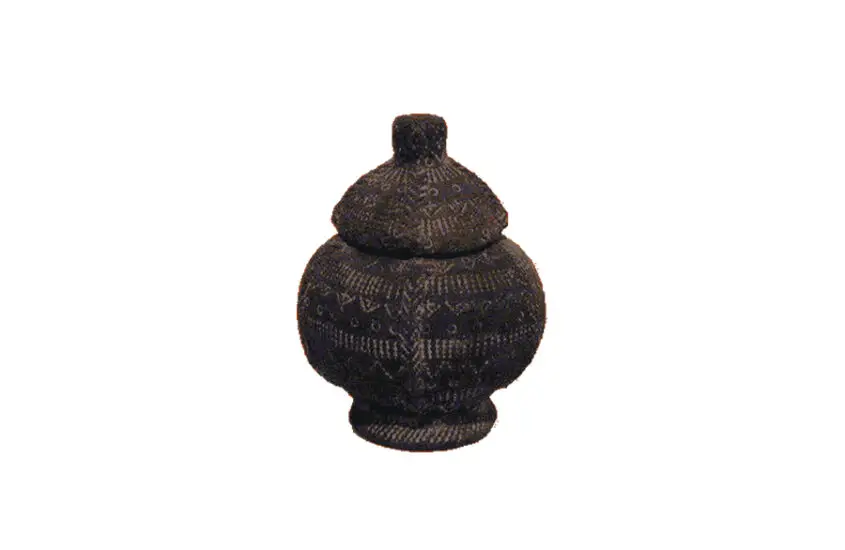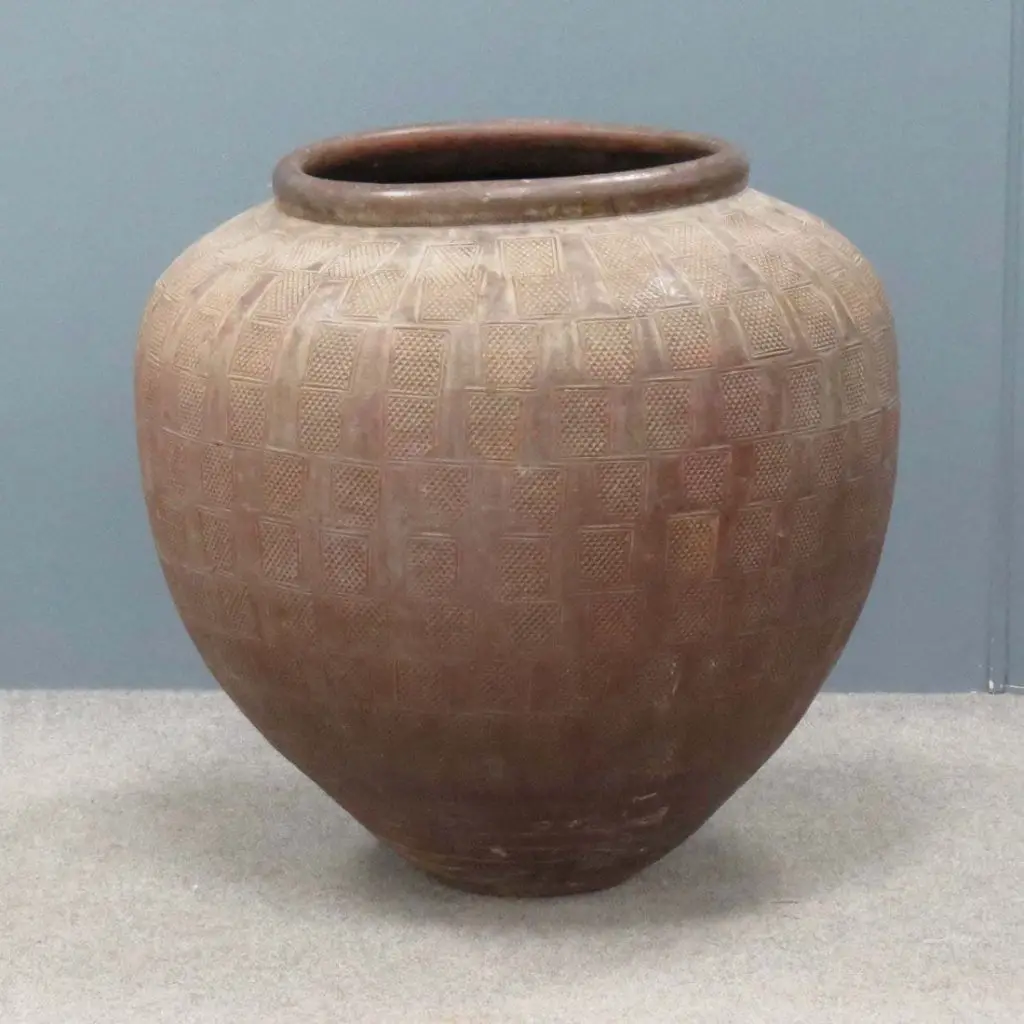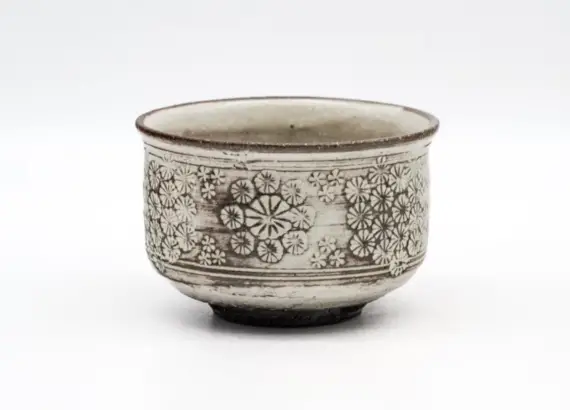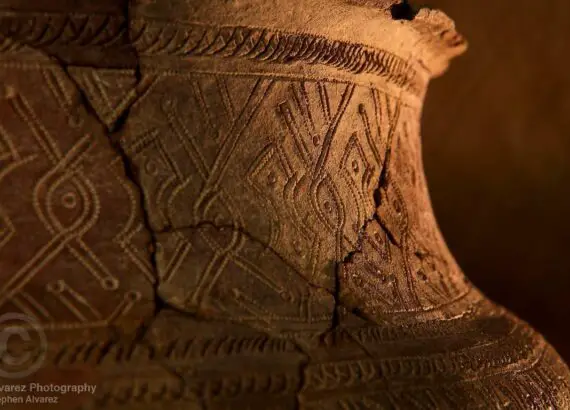What Is Kalinga Pottery? History, Facts, Description, Examples

Kalinga pottery tradition dates back to the third millennium and plays a vital role in trade and social relationships in Kalinga society. If you’ve never heard about Kalinga ceramics, you’ll find the history of this pottery art fascinating, as it could reveal the past of this ancient culture.
Thanks to numerous researches of the Kalinga pottery art, today we know how to create ceramics using its techniques and what tools and materials to make such vessels.
If you are interested in pottery, this antique tradition’s history will help you immerse into clay art and get knowledge and inspiration for crafting your own ceramics.
Table of Contents
What Is Kalinga Pottery?
Kalinga pottery is an ancient clay art tradition widely distributed in Kalinga, a province located in the Philippines’ Cordillera Mountains. This pottery art has a few distinctive features, one of which is its unique geometric motifs.
Having transcended beyond the borders of countries of the world, pottery has found a home in this quaint province of Kalinga in the Philippines. Due to the soil topography or the province, the clay deposits found there are perfect for all kinds of pottery.
The kind of pottery practiced by the Kalinga people is so unique that it goes by no other name than the province where it is practiced.
Located along the shores and valleys of the Chico river, the clay from the valley is harnessed and used to make pottery, most of which are functional.
The vessels that belong to Kalinga ceramics apply ornaments and anthropomorphic designs “tattooed” by stamping, closely related to those used in tattooing.
Kalinga pottery comprises three different types of ceramic vessels:
- rice cooking (ittoyom);
- vegetable/meat cooking (oppaya);
- and water storage (immosso) pots.
The rice cooking ceramics are usually large and thin in comparison to vegetable/meat pots. Besides, it has a smaller opening.
As for the water storage pots, they have a medium size and a smaller neck. While the first two ceramics types can have three sizes (medium, large, and small), water pots have a uniform size.
In addition to these vessels, Kalinga pottery includes earthenware ceramics to cook vegetables and large earthenware pots for communal events like weddings.
The History of Kalinga Pottery
Kalingas has a deep, fascinating culture with solid connections to ceramics, which had diverse applications. Thus, for example, the first Kalinga pottery was implemented for holding remains of the deceased.
Native Filipinos created these ceramic jars starting 3500 years ago. The earthenware pots were decorated with anthropomorphic designs, and they also had pot covers shaped like human heads.
At the same time, the Kalinga pottery was served for commercial and household use. Kalingas exchanged ceramics and used them as an extra source of income. The value of a specific vessel was determined by the amount of uncooked rice that may fit this pottery.
Before it became a widely commercialized industry in the Philippines, Kalinga pottery was used as a form of currency to barter for rice.
Although many would argue that Kalinga pottery is not sufficient enough to be regarded as a mainstay for the Philippine industry, it surely served its purpose as a valuable currency during the barter period.
Towards the middle of the 14th century, there began to be a decline in the popularity and practice of Kalinga pottery making. This happened because many natives began to favor the Chinese porcelain pieces that flooded the then Philippine market.
Such was the popularity of such porcelain pieces that to date, some of the oldest shards and pottery pieces that have been uncovered in the Philippines are porcelain. This era began to be known as the Porcelain era.
In part, the notoriety of this Chinese pottery grew as a result of the attribution of spiritual powers to them.
The Kalinga natives believed them to be divine mediums through which healing, visions, blessings, and prosperity came, so of course, everyone wanted them. Soon enough, they greatly reduced the popularity of most locally produced earthenware.
Around 3500 years ago, there began to be a resurrection of the tradition, and in 2005, the Pasil Potters Association was established.
The tradition of pottery making was transmitted from mothers to daughters in the Kalinga society. Moreover, women created vessels not alone but in groups. The scale of pottery production varied depending on the region and the factors like market demand and environmental stress.

Kalinga women have constantly expanded the distribution of ceramics to sell a wide range of pottery products. During the mid-1980s, they even started to craft earthenware jars for wine.
Besides, during this time, Kalingas started making design and technological changes in their pottery. Thus, they began to create nontraditional ceramics like flower pots, animal sculptures, and more.
Description of Kalinga Pottery
One thing that sets one type of pottery apart from another is the embellishments that are peculiar to each potter. One of the most notable features of Kalinga pottery is the unique style of engraving or “tattooing” that is sported by the products.
Located in the Philippines, the two tribes that are majorly into the creation and commercialization of this type of pottery are the Pasil and the Cordillera people.
Kalinga Pottery: Basic Characteristics
As mentioned above, Kalinga pottery is used to be made by women only. But what do we know about the process of its creation?
According to the William Longacre studies, who worked on his Kalinga Ethnoarchaeological Project for almost 20 years, the stylistic features of Kalinga ceramics differ depending on the villages. If masters knew each other, they transmitted their knowledge, thus forming a specific tradition. Accordingly, pottery has modeled Kalinga’s social relationships.
Pasil Pottery
Besides the designs and mode of creation of pottery by the Pasils, one thing that sets it further apart is the fact that the Pasil pottery industry is run and maintained by women.
Dubbed the “womencraft” of Pasil, the sacred tradition has been handed down generations from mother to daughter, mostly because the men were “too rough” to handle such a delicate art.
Using a special kind of clay from the Chico river that has been pounded and hydrated to perfection, these women use their hands and incorporate certain plants to enhance or reduce the thickness, height, width, etc. of these handmade products.
No machines are used in preparing the pottery.
After molding, the pottery is sun-dried and embellished before the heating, trimming, and polishing process is done.
Cordillera Pottery
This type of pottery is not just unique in terms of the materials used in the making process, it is also discernable by the presence of fur or leather surrounding the outer surface of the pottery.
While some argue that the source of the clay used here is different (from the Sibalom river), the creation process and functions are closely related.
After collecting clay from the Sibalom river, it is kept in places out of the reach of the sun before it is put to use.
In terms of function, pottery dated between 895 and 775BC have recently been excavated, this particular one is known as the “Manunggul”. This type of pottery was typically used to house the ashes of people and could be recognized by the human-like carvings that decorated them.
The manufacture of Kalinga potteries comprises several stages:
- the acquisition of the starting material (clay);
- the process of making clay flexible (the material has to be pounded and mixed with enough amount of water);
- placing the ready piece of clay on a rotating plate.
After finishing the preparations, women use the hand-modeling and coil-and-scrape techniques to get the desired height and shape.
The next step is creating the rim, which is designed using a wet rag on top of it and then rotating it in the other direction. It is also possible to change the thickness of the pot or vessel by scraping its walls.
After the modeling stage is over, the pot must be dried for a short period before the base is shaped and ready to be fired. Besides, small amounts of clay should be added inside and outside the clay if additional heating is done.
Otherwise, the evenness of the surface can be disrupted.
Types of Kalinga Pottery
Classification of pottery is often done with respect to their functions. That said, Kalinga pottery is divided into 2 major groups:
1. The Home-use Pottery
As the name implies, this type of pottery is used around the house. These functional pieces of pottery were specialized in their usage and were divided into pots used to:
• cook rice (ittoyom),
• cook meat or vegetables (oppaya),
• collect and store water (immosso).
The pots are distinguished by their sizes, the immosso being the biggest of the three most times.
A more inclusive, functional type of Kalinga pottery is the “tapayan” pottery. Also referred to as “belanga”, “balanga” or “tempayan”, this earthenware can be used to cook, store water, ferment beverages, and as urns.
2. Conventional-use Pottery
This type of pottery was used only occasionally as urns or during burials. The covers of urns were shaped like heads.
Tools for Crafting Kalinga Pottery
Unlike modern pottery, the process of creating Kalinga ceramics doesn’t require specific equipment like a pottery wheel. The women formed the vessel with their hands using coil and scrape techniques. Among the tools applied in crafting potteries were paddles and anvils.
As for the vessels’ polishing, it can be done through the use of a polishing stone. In some cases, women also applied red hematite paint pots to paint the ceramics and establish a specific stylized design.
Whether Pasil or Cordillera, some tools used in the process are similar and basic. They include:
- Special clay;
- A wooden paddle to collect and mold the clay;
- A pestle and wooden bowl to pound the clay, or a tub for mashing the clay with the feet;
- A wheel or a rotating medium;
- A rag to add finishing touches to the pottery;
- A wooden tool for scraping off uneven clay;
- A polishing stone to give the pottery a smooth finish;
- A raised flat workshop.
Some other tools used for decorating, embossing, or imprinting on the pottery are:
- Leaves,
- Leather,
- Carved pieces of wood, etc.
Kalinga Pottery Materials
Kalinga pottery production was utilized for different necessities, including social and economic ones. Therefore, people used materials that were easy to get and apply.
Thus, for example, some areas of the Philippines traditionally would use clay found near the Sibalom River for their pot-making.
Males in the Kalinga society usually mine the clay that is used to form the vessels. Besides, male traders in the neighboring villages sometimes barter resin and ocher collected from upland forests to cover the ceramics.
Women prepare the material as well as shape and fire the pottery. For crafting a particular pot shape, they use special wooden paddles. After the molding process is finished, the clay had to be kept away from sunlight.
Examples of Kalinga Pottery
In no particular order, here are some examples of Kalinga pottery that have been exhibited in museums since the time of excavation and rediscovery:
- 1. Manunggul Jar
- 2. Tapayan
- 3. Anthropomorphic Pots, etc.




